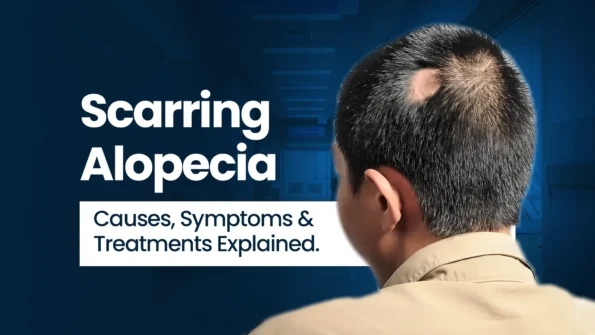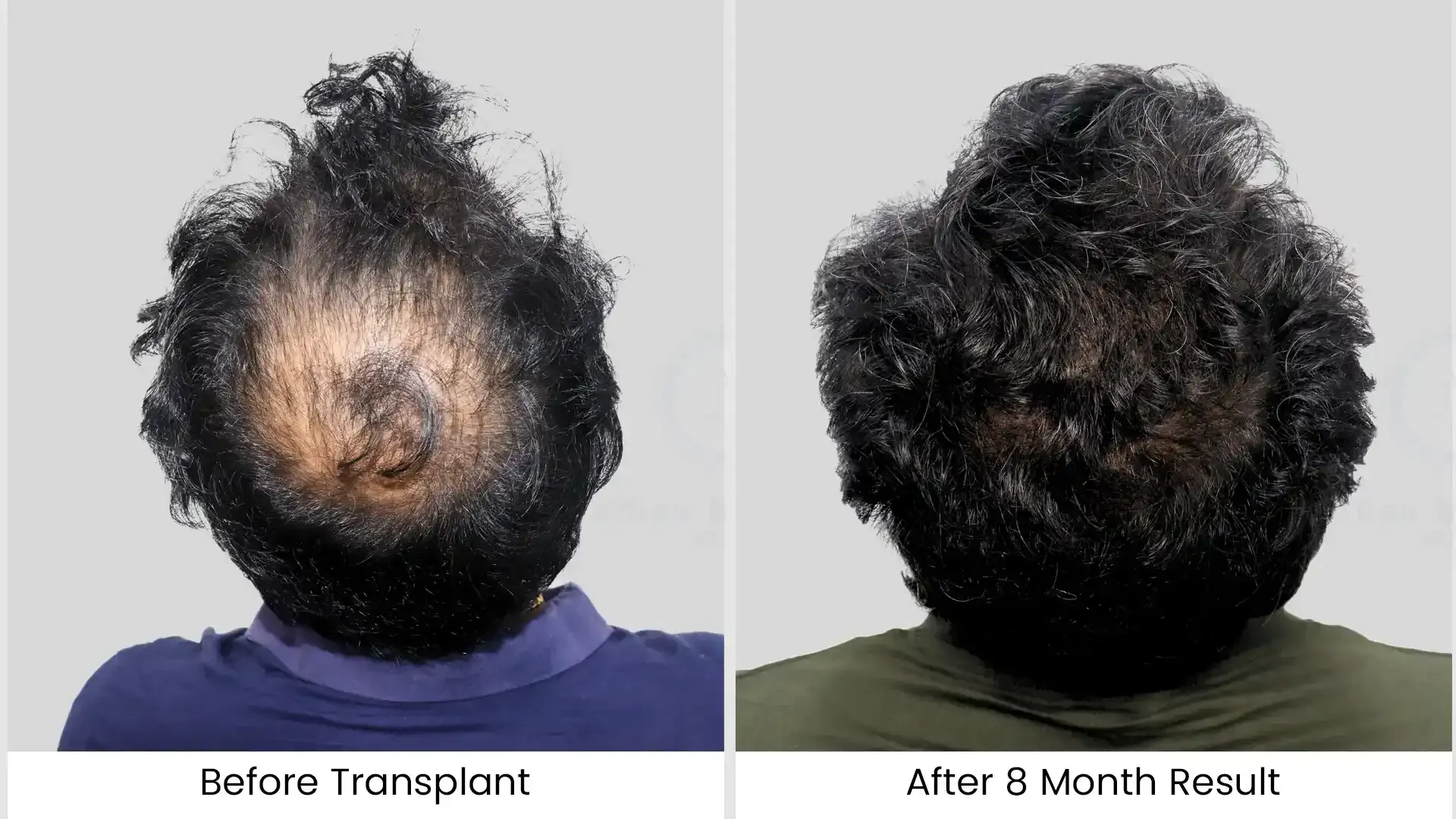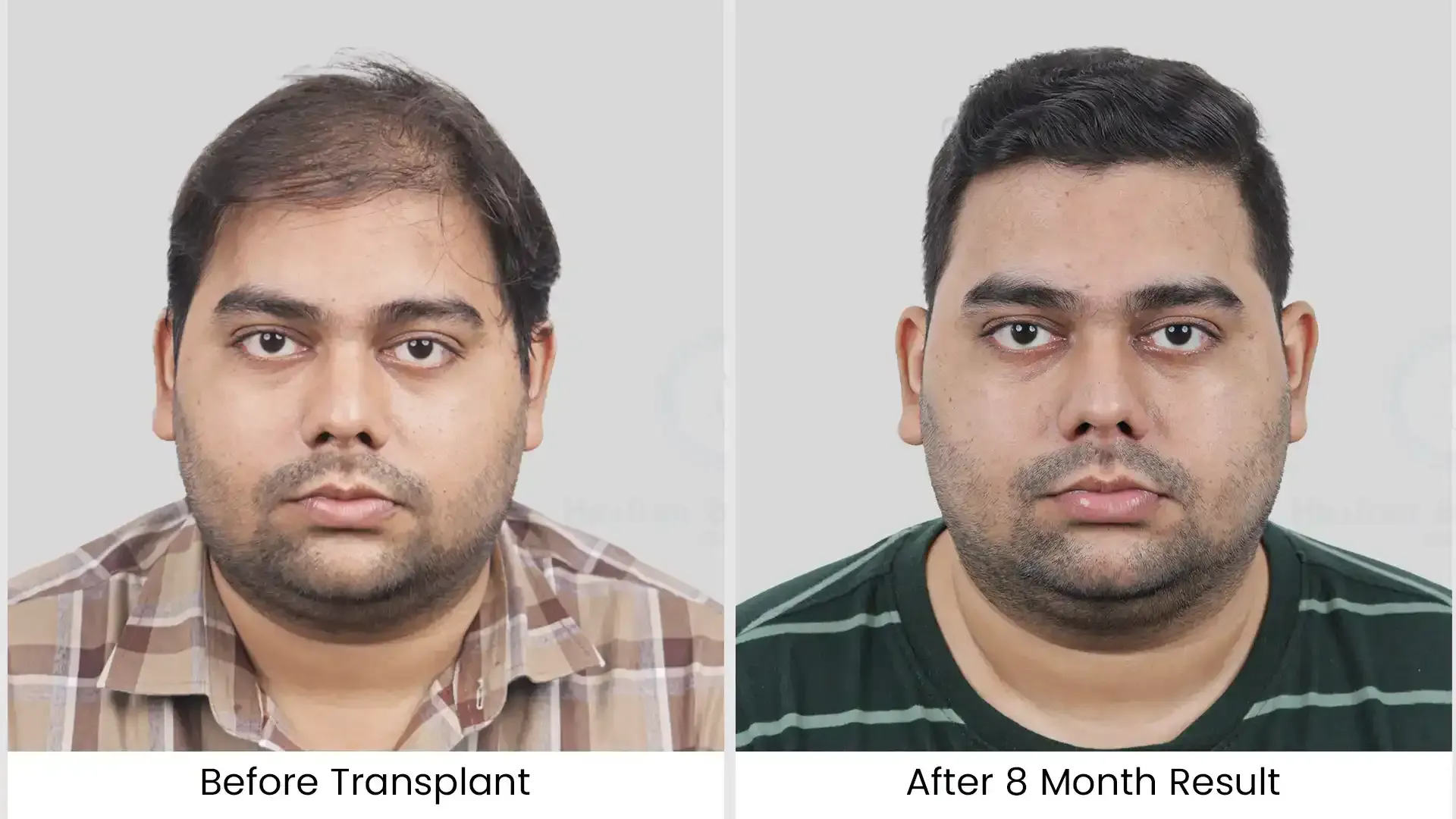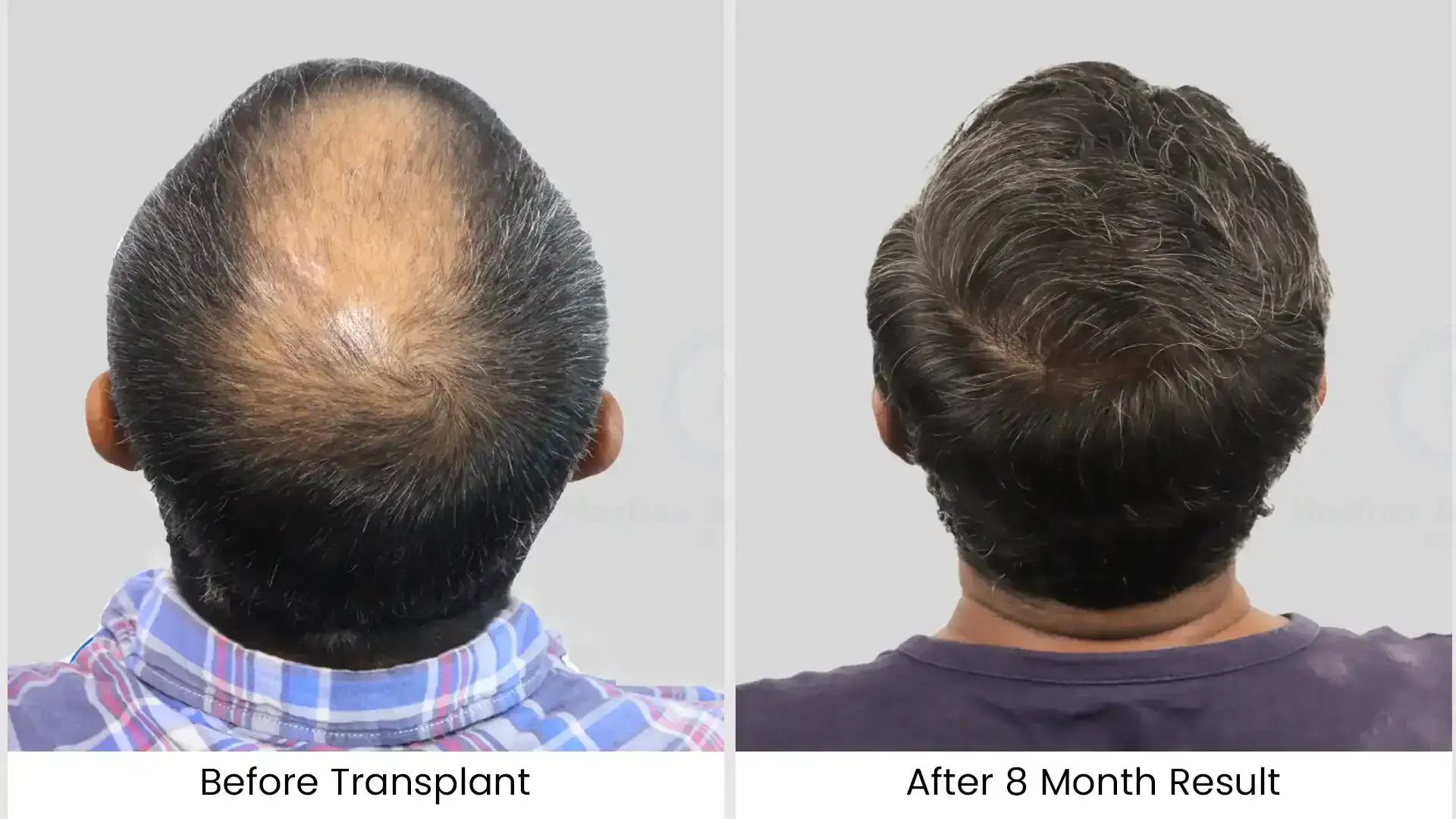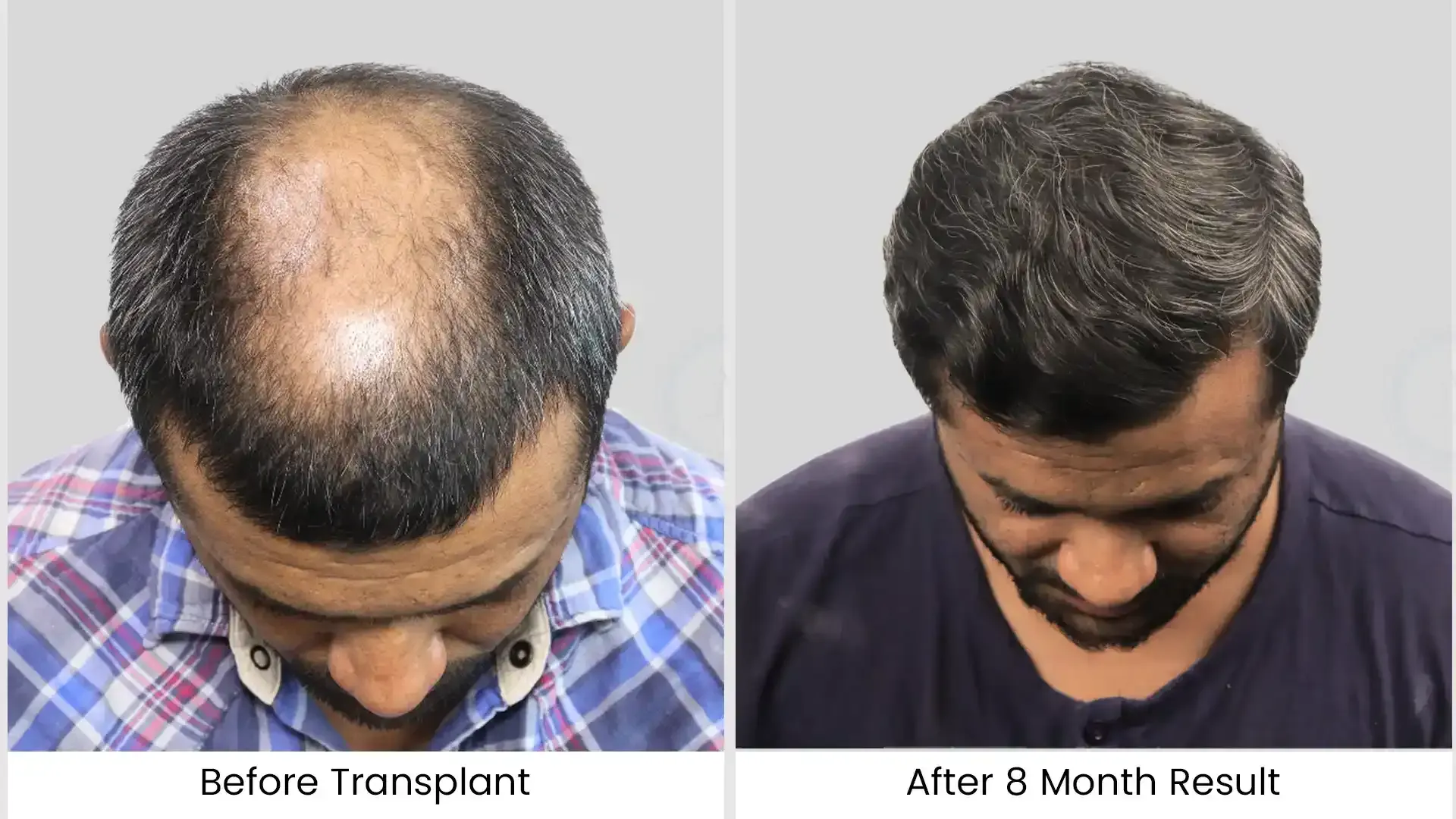Have you noticed smooth, shiny patches on your scalp where hair has completely disappeared and simply isn’t growing back? Do you experience persistent itching, burning, or tenderness in those areas? If this sounds familiar, you might be dealing with something more complex than ordinary hair fall. You could be experiencing a condition known as Scarring Alopecia, or Cicatricial Alopecia.
While most forms of hair loss are temporary or treatable, scarring alopecia is different. It represents a group of rare but serious disorders where the hair follicle is permanently destroyed and replaced by scar tissue. This means that once the hair is gone from an affected area, it cannot grow back.
Understanding this condition is the first step toward managing it. In this comprehensive guide, the experts at HairFree HairGrow will walk you through everything you need to know about scarring alopecia.
What is Scarring Alopecia?
Scarring alopecia, also called cicatricial alopecia, is a rare form of hair loss where hair follicles—the tiny shafts in your skin that grow hair—are permanently destroyed and replaced by scar tissue. Unlike other types of hair loss, like male pattern baldness or alopecia areata, the damage in scarring alopecia is irreversible, making regrowth impossible in affected areas.
Here’s how it compares to non-scarring alopecia:
Aspect | Scarring Alopecia | Non-Scarring Alopecia |
Follicle Damage | Permanent destruction | Temporary/reversible |
Scar Tissue | Yes (smooth, shiny skin) | No |
Hair Regrowth | Impossible in affected areas | Often possible |
Common Examples | Lichen planopilaris, CCCA | Alopecia areata, pattern baldness |
Prevalence | ~7% of hair loss cases | 50–75% of adults over 50 |
Scarring alopecia can affect anyone, but it’s more common in adults, with specific types like central centrifugal cicatricial alopecia (CCCA) prevalent in Black women. It’s not contagious, and while genetics may play a role in some cases, the exact causes remain unclear.
Types of Scarring Alopecia
Scarring alopecia comes in two forms: primary and secondary. Understanding the type you may have is crucial for diagnosis and treatment.
Primary Scarring Alopecia
This type stems from internal factors like inflammation or autoimmune disorders that target and destroy hair follicles. Common subtypes include:
Type | Description | Who’s at Risk? |
Frontal Fibrosing Alopecia | Receding hairline, often with eyebrow loss | Post-menopausal women |
Central Centrifugal Cicatricial Alopecia (CCCA) | Bald patch at crown, spreads outward; linked to relaxers or tight styles | Black women (most common) |
Lichen Planopilaris | Itchy, scaly patches; burning sensation | Women over 50 |
Discoid Lupus Erythematosus | Sun-sensitive rashes with hair loss | Women with lupus |
Folliculitis Decalvans | Bacterial infection causing pustules | Men with Staph infections |
Secondary Scarring Alopecia
This occurs due to external damage closing follicular openings. Causes include:
- Burns or chemical damage
- Severe infections (e.g., fungal)
- Radiation from cancer treatments
- Tumors or physical injuries
Recognizing the Red Flags: Symptoms of Scarring Alopecia
The signs of scarring alopecia can vary greatly from person to person. Sometimes the process is rapid and painful, while other times it can be slow and asymptomatic for years. However, there are several key symptoms to watch for:
Active Symptoms (Signs of Inflammation)
- Intense Itching, Burning, or Pain: These are often the earliest and most distressing signs that active inflammation is present.
- Redness and Swelling: The scalp may appear pink, red, or even purplish around the hair follicles.
- Pustules or Pimples: The presence of pus-filled bumps often points to a more aggressive inflammatory or infectious process.
Visible Signs of Hair Loss and Damage
- Expanding Patches of Hair Loss: Unlike the diffuse thinning of pattern baldness, scarring alopecia often creates distinct patches of hair loss.
- Smooth, Shiny Patches of Baldness: This is the classic hallmark of late-stage scarring alopecia. The loss of follicle openings (pores) gives the skin a smooth, scarred appearance.
- Scaling or Crusting: Flaky skin or crusts may form around the hair follicles.
If you are experiencing any of these symptoms along with hair loss, it is crucial to seek a professional opinion immediately.
Treatment for Scarring Alopecia: A Strategy of Preservation
It is vital to set realistic expectations for treatment. The primary goal is not to regrow hair where follicles have been destroyed. The goal is to halt the inflammatory process, stop the disease from progressing, and preserve the healthy hair you still have.
Early intervention is key. The sooner the inflammation is controlled, the more hair can be saved. Treatment is often multi-faceted and tailored to the specific type of scarring alopecia.
- Controlling Inflammation: This is the cornerstone of treatment. Options include:
- Topical Steroids & Injections: High-potency corticosteroid creams, solutions, or direct injections into the scalp can deliver powerful anti-inflammatory medicine right where it’s needed.
- Oral Anti-inflammatory Medications: Drugs like hydroxychloroquine or doxycycline are often used to reduce inflammation systemically.
- Modulating the Immune System: For autoimmune-driven types, medications that suppress or modify the immune response, such as immunosuppressants, may be prescribed.
- Antibiotics: For conditions like Folliculitis Decalvans, oral and topical antibiotics are used to control the underlying bacterial infection.
Platelet-Rich Plasma (PRP) Therapy
While PRP therapy is mainly effective in non-scarring alopecia, some studies have shown promising results for early-stage scarring alopecia like lichen planopilaris. PRP uses your body’s own growth factors to reduce inflammation and improve scalp healing.
Hair Transplants
Many patients ask about hair transplantation. A hair transplant is only a viable option after the disease has been completely inactive (in remission) for at least one to two years. Transplanting hair into an actively inflamed scalp will fail, as the inflammation will destroy the newly implanted follicles.
Your Path Forward with HairFree & HairGrow
Living with a diagnosis of scarring alopecia can be emotionally challenging, but you don’t have to face it alone. While the hair loss in affected areas is permanent, effective medical management can stop its spread, relieve painful symptoms, and help you keep the rest of your hair healthy and strong.
The most powerful tool you have against this condition is early and accurate diagnosis. If your symptoms resonate with what you’ve read in this guide, do not wait or dismiss them as “just hair fall.”
At HairFree HairGrow, we specialize in diagnosing and managing complex hair loss conditions like scarring alopecia. Our experts combine years of experience with advanced diagnostic tools to give you the clear answers and effective treatment plan you deserve.
Take the first step towards taking control. Schedule your confidential consultation with our hair loss experts today.
Living with Scarring Alopecia & Prevention
Living with scarring alopecia can feel overwhelming, but you’re not alone. Here’s how to manage:
- Cover Options: Wigs, scarves, or hats for confidence.
- Support Groups: Connect via the National Alopecia Areata Foundation (NAAF) or online communities.
- Diet: Anti-inflammatory foods (e.g., salmon, walnuts) may help overall health.
- Gentle Care: Avoid tight styles, hot tools, or harsh chemicals.
Prevention:
- Primary: No known way to prevent due to autoimmune roots.
- Secondary: Protect against burns or infections with gentle hair practices.
Outlook: With early treatment, many retain enough hair to cover bald patches. Progression varies; some see minimal loss, others more extensive.
Our Scalp Soothing Bundle supports your scalp’s health, complementing medical treatments.
FAQs
1. What is scarring alopecia?
Scarring alopecia, also known as cicatricial alopecia, is a type of hair loss caused by inflammation that destroys hair follicles and replaces them with scar tissue. Once this happens, hair cannot regrow, making early diagnosis and treatment essential.
2. What are the main causes of scarring alopecia?
The main causes include autoimmune diseases, bacterial or fungal infections, chemical or heat damage, and scalp injuries. In some cases, genetics or underlying inflammatory disorders can also trigger the condition.
3. Can hair grow back after scarring alopecia?
Unfortunately, once the follicles are destroyed, hair regrowth is not possible. However, early medical treatment can stop the disease from spreading and protect the remaining healthy follicles.
4. How is scarring alopecia treated?
Treatment focuses on controlling inflammation and preserving existing hair. Common options include corticosteroids, antibiotics, immunosuppressive medicines, and PRP therapy. In stable cases, a hair transplant may be considered after 1–2 years of inactivity.
5. When should I see a doctor for scarring alopecia?
You should visit a dermatologist or trichologist if you notice redness, itching, burning, or smooth bald patches on your scalp. Early diagnosis can help manage the condition before it leads to permanent hair loss.
Written By
MBBS, DDV
Dr. Shridevi Lakhe is a leading hair restoration specialist with expertise in scarring alopecia. She provides advanced treatments and personalized care to help patients manage hair loss, restore scalp health, and achieve lasting results through evidence-based medical solutions.
Disclaimer
We’ve made all possible efforts to ensure that the information provided here is accurate, up-to-date and complete, however, it should not be treated as a substitute for professional medical advice, diagnosis or treatment. See Detailed Disclaimers Here.

